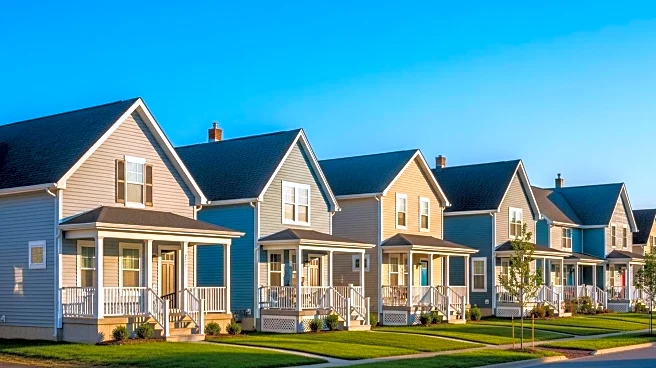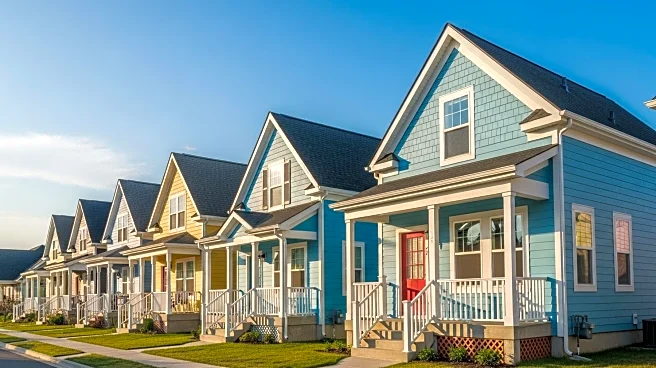What is the story about?
What's Happening?
The median sale price for a single-family home in Massachusetts reached $665,000 in July, according to a report from The Warren Group. However, Milford stands out as a more affordable option, with a median home sale price of $557,000. This price difference makes Milford an attractive location for prospective homebuyers seeking more value for their money. In contrast, neighboring towns such as Hopkinton, Holliston, and Medway have significantly higher median sales prices, ranging from $695,000 to $987,500. A Colonial-style home in Milford, listed at $659,000, exemplifies the town's value, offering four bedrooms, a finished basement, and a renovated kitchen. The real estate market in Milford is described as stabilizing, with fewer bidding wars and more homes available, allowing buyers more choice.
Why It's Important?
The affordability of housing in Milford compared to other parts of Massachusetts highlights a significant issue in the state's real estate market. As housing prices continue to rise, areas like Milford provide a viable alternative for those priced out of more expensive regions. This trend could influence migration patterns within the state, as individuals and families seek more affordable living conditions. The availability of more homes and the stabilization of prices in Milford may also indicate a shift in the housing market dynamics, potentially affecting real estate strategies and economic planning in the region.
What's Next?
As the real estate market in Milford continues to stabilize, it is likely that more buyers from higher-priced areas, such as Boston, will consider relocating to take advantage of the town's affordability. This could lead to increased demand in Milford, potentially driving up prices if inventory does not keep pace. Real estate agents and developers may need to adjust their strategies to accommodate this shift, focusing on maintaining a balance between supply and demand to prevent future price surges.
Beyond the Headlines
The trend of relocating to more affordable areas like Milford could have broader implications for urban planning and infrastructure development. As more people move to these regions, there may be increased pressure on local services, schools, and transportation systems. Additionally, this shift could impact the cultural and economic landscape of these towns, as new residents bring different needs and expectations.
AI Generated Content
Do you find this article useful?














